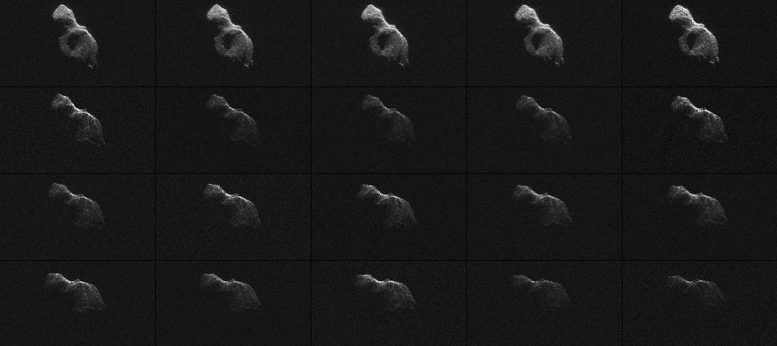
NASA scientists used Earth-based radar to produce these sharp views – an image montage and a movie sequence – of the asteroid designated “2014 HQ124” on June 8, 2014. Credit: NASA/JPL-Caltech/Arecibo Observatory/USRA/NSF
Using the Deep Space Network antenna and two other radio telescopes, astronomers were able to capture radar observations of asteroid 2014 HQ124 as it passed Earth on June 8, 2014.
NASA scientists using Earth-based radar have produced sharp views of a recently discovered asteroid as it slid silently past our planet. Captured on June 8, 2014, the new views of the object designated “2014 HQ124″ are some of the most detailed radar images of a near-Earth asteroid ever obtained.
The radar observations were led by scientists Marina Brozovic and Lance Benner of NASA’s Jet Propulsion Laboratory, Pasadena, California. The JPL researchers worked closely with Michael Nolan, Patrick Taylor, Ellen Howell, and Alessondra Springmann at Arecibo Observatory in Puerto Rico to plan and execute the observations.
Radar data of asteroid 2014 HQ124 taken over four hours on June 8, 2014.
According to Benner, 2014 HQ124 appears to be an elongated, irregular object that is at least 1,200 feet (370 meters) wide on its long axis. “This may be a double object, or ‘contact binary,’ consisting of two objects that form a single asteroid with a lobed shape,” he said. The images reveal a wealth of other features, including a puzzling pointy hill near the object’s middle, on top as seen in the images.
The 21 radar images were taken over a span of four-and-a-half hours. During that interval, the asteroid rotated a few degrees per frame, suggesting its rotation period is slightly less than 24 hours.
At its closest approach to Earth on June 8, the asteroid came within 776,000 miles (1.25 million kilometers), or slightly more than three times the distance to the moon. Scientists began observations of 2014 HQ124 shortly after the closest approach, when the asteroid was between about 864,000 miles and 902,000 miles (1.39 million kilometers and 1.45 million kilometers) from Earth.
Each image in the collage and movie represents 10 minutes of data.
The new views show features as small as about 12 feet (3.75 meters) wide. This is the highest resolution currently possible using scientific radar antennas to produce images. Such sharp views for this asteroid were made possible by linking together two giant radio telescopes to enhance their capabilities.
To obtain the new views, researchers paired the 230-foot (70-meter) Deep Space Network antenna at Goldstone, California, with two other radio telescopes, one at a time. Using this technique, the Goldstone antenna beams a radar signal at an asteroid and the other antenna receives the reflections. The technique dramatically improves the amount of detail that can be seen in radar images.
To image 2014 HQ124, the researchers first paired the large Goldstone antenna with the 1,000-foot (305-meter) Arecibo radio telescope in Puerto Rico. They later paired the large Goldstone dish with a smaller companion, a 112-foot (34-meter) antenna, located about 20 miles (32 kilometers) away.
A recent equipment upgrade at Arecibo enabled the two facilities to work in tandem to obtain images with this fine level of detail for the first time.
“By itself, the Goldstone antenna can obtain images that show features as small as the width of a traffic lane on the highway,” said Benner. “With Arecibo now able to receive our highest-resolution Goldstone signals, we can create a single system that improves the overall quality of the images.”
The first five images in the new sequence – the top row in the collage – represent the data collected by Arecibo, and are 30 times brighter than what Goldstone can produce observing on its own.
Scientists were fortunate to be able to make these radar observations at all, as this particular asteroid was only recently discovered. NASA’s NEOWISE mission, a space telescope adapted for scouting the skies for the infrared light emitted by asteroids and comets, first spotted the space rock on April 23, 2014. Additional information about the asteroid’s discovery and its orbit was shared in a previous Web story online at: http://www.jpl.nasa.gov/news/news.php?release=2014-178
For asteroids, as well as comets, radar is a powerful tool for studying the objects’ size, shape, rotation, surface features, and orbits. Radar measurements of asteroid distances and velocities enable researchers to compute orbits much further into the future than if radar observations were not available.
NASA detects, tracks, and characterizes asteroids and comets passing close to Earth using both ground- and space-based telescopes. The Near-Earth Object Program, commonly called “Spaceguard,” discovers these objects, characterizes a subset of them, and identifies their orbits to determine if any could be potentially hazardous to our planet. To date, U.S. assets have discovered more than 98 percent of the known near-Earth objects.
Along with the resources NASA puts into understanding asteroids, it also partners with other U.S. government agencies, university-based astronomers, and space science institutes across the country that are working to find, track, and understand these objects better, often with grants, interagency transfers, and other contracts from NASA. In addition, NASA values the work of numerous highly skilled amateur astronomers, whose accurate observational data helps improve asteroid orbits after they are found.
The contributions of JPL engineers Jon Giorgini, Joseph Jao, and Clement Lee were critical to the successful execution of these observations.
Through its Asteroid Initiative, NASA is developing a first-ever mission to identify, capture, and redirect a near-Earth asteroid to a stable orbit around the moon with a robotic spacecraft. Astronauts aboard an Orion spacecraft, launched by a Space Launch System rocket, will explore the asteroid in the 2020s, returning to Earth with samples. Experience in human spaceflight beyond low-Earth orbit through this Asteroid Redirect Mission will help NASA test new systems and capabilities needed to support future human missions to Mars. The Initiative also includes an Asteroid Grand Challenge, which is seeking the best ideas to find all asteroid threats to human populations and accelerate the work NASA already is doing for planetary defense.
JPL manages the Near-Earth Object Program Office for NASA’s Science Mission Directorate in Washington. JPL is a division of the California Institute of Technology in Pasadena.

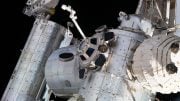
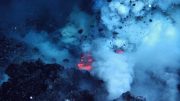
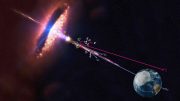
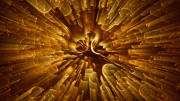
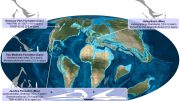


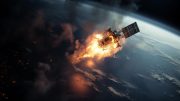
Be the first to comment on "Astronomers View Near-Earth Asteroid 2014 HQ124 as it Passes Earth"